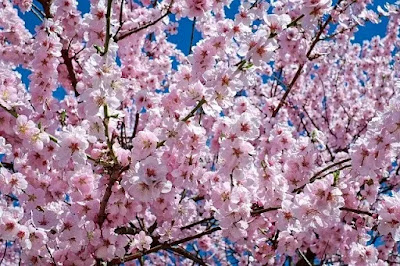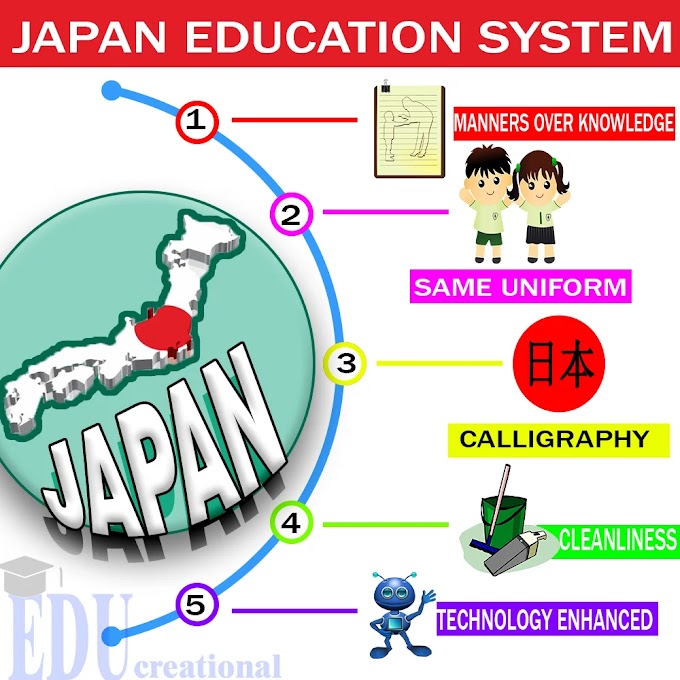Japan is at forefront of the world and everyone’s copying it. But what are other countries really copying from Japan. The answer to this question is in just small three words but the weight of these words is the foundation of the nation. Those heavy three words are “Japan education system.”
A lot of nations are on the declining mode of education and are looking towards Japan as an inspiration to fix up their obsolete and retarded education system. Japan , a land of moral blends and rich ethics, is leading the world in its aspiration to provide high quality education to the Japanese students.
Manners over education, self-help, cultural education and technology-driven education are the core issues over which the education system for the 21st century is been held upon.
 |
| Japan Education System |
There’s a lot which should be looked upon when hovering over the system, but the schools and the institutes often speak upon the development.
In this article, we will be decoding Japan education system and try to find out whether action speaks louder than words or punctures down your enthusiasm for the system.
1. Manners over education:
This feature of the education system finds out it’s peculiarity from the other education systems. Japan emphasis strongly on the ethics and moral being taught to children. It firmly believes that it is necessary to build a moral character of each and every child so that he/she will be disciplined as well as determined to achieve great success in life.
Instead of focusing on early life education, students are taught manner, principles of life and more importantly to be disciplined in life. These strong values in the form of seeds, grows into a giant tree which is difficult to be conquered. The principles taught to small children help them to face each and every barrier in their personal as well as professional life.
2. Building creativity:
Every child is born creative. Japan is determined in bringing out that creativity and try to shape the student in that creative loop. Japan uses a special technique to imbibe a sense of creativity among the students through colors.
Color marks the livelihood of small children and students have fun playing with those colors to create something which they can’t even spell out.
Two Japanese artist namely, ‘YUSUKE IMAI’ and ‘AYAMI MOTEKI ’ have developed a simple way for students to play with colors. This technique is called as “nameless paint.” It includes tubes of different colors without mentioning the name of the color. The kid paints here and there, tries mixing the color and finds new color which glorifies his/her brain.
3. Self-help is best help:
It might be strange for you to know that Japanese school do not have any janitors and custodians for the students. Instead, all the students are responsible of cleanliness of schools and surrounding areas. Students generally spends an hour or more after the school hours for cleaning the classes.
Each student is allotted with particular responsibility for self -help which he/she has to complete in a team. This promotes students to accomplish their daily task themselves and aren’t dependent on others. Each and every school in Japan follows this pattern and maintain a record to students along with their task.
4. New academic year:
The new academic year starts on April 1st. While, most of the schools starts their new year in June or July, Japan starts their schools and business calendar from 1st April. Over the same period, a special phenomenon called cheery blossom takes place. The academic year is generally divided into three parts. Students get vacation after each trimester mainly in summer, winter and spring.
5. Japanese calligraphy and poetry:
Japan calligraphy or SHODO is an art form for the Japanese people. SHODO includes a bamboo brush dipped into the ink using it to write on a rice paper. HAIKU on the other hand is a form of poetry which enables people to express their thoughts and feelings. This both classes teach students to respect their culture and age-old traditions.
6. High school attendance rate:
School attendance rate in Japanese schools is very high-around 99%. It is a shocker to most of us because we know that students hate to go to school. The secret behind this success lies somewhere in the points mentioned above.
Education system in Japan is not only just about education but is mainly centered around the idea of making learning fun for students. Japanese students don’t miss their classes nor do they arrive late during school hours. Japanese students are very studious and are always focused on learning new things, either it be a sport or an art form.
7. Examination hell:
A single test after the high school determines the future of the students. It is an entrance test which determines which college a student can opt for. A student can choose one college they would like to go to. That college has a particular score requirement. If a student doesn’t reach that score, they probably don’t go to college. Out of total students, only 77% of students continue their further studies. The preparation period for this test is nicknamed as ‘examination hell.’
Conclusion:
Japan education system holds it’s significance from the history of the nation. Japan, in the history of the world, was an isolated region and had never allowed anyone to impose their rule on them. This lead them to stand strong over other in education and creating professional for the technology-driven world. Rather, more emphasis is given on problem-solving and decision making skills to overcome every barrier. There’s a lot to learn from Japan because their root are so deep into the soil of success.
Thank you!





1 Comments
Thank you for the information....
ReplyDelete